Geochemistry Monitoring of CO2 storage at the CO2CRC Otway Project, Victoria
Jim Underschultz A , Barry Freifeld B , Chris Boreham C , Linda Stalker D , Ulrike Schacht E , Ernie Perkins F , Dirk Kirste G and Sandeep Sharma HA CO2CRC & CSIRO Petroleum PO Box 1130, Bentley WA 6102
B Lawrence Berkley National Laboratory
C CO2CRC & Geoscience Australia
D CO2CRC & CSIRO Petroleum
E CO2CRC & Adelaide School of Petroleum
F CO2CRC & Alberta Research Council
G CO2CRC & Simon Fraser University
H CO2CRC
The APPEA Journal 48(2) 472-472 https://doi.org/10.1071/AJ07062
Published: 2008
keywords: CO2 monitoring and verification
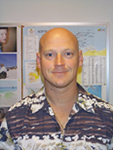
Jim Underschultz completed his BSc in geology in 1986 at the University of Alberta. He worked as a petroleum hydrogeologist at the Alberta Research Council until 1994 during which time he completed a MSc in Geodynamics at the University of Alberta. Since 1994 he has been president of PHI Hydrodynamics Ltd in Calgary and is Exploration and Appraisal Stream Leader at CSIRO Petroleum and Hydrodynamics and Geochemistry Discipline Leader in the CO2CRC in Australia. james.unserschultz@csiro.au |

Barry Freifeldhas a PhD (civil and environmental engineering, 2001, University of California, Berkeley), a MS (mechanical engineering, 1992, University of California, Santa Barbara) and a BA (applied mathematics 1989, University of California, Berkeley). As a field hydrologist, active areas of interest are in subsurface flow and transport relating to natural hydrate occurances, nuclear waste disposal amd geologic sequestration of carbon dioxide to mitigate global warming. His work has spanned from the Alaskan and Canadian Arctic to the Gulf of Mexico, and more recently various international collaborations for demonstrfation of CO2 storage. |
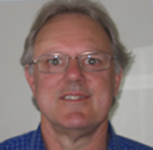
Chris Boreham is a principal research scientist at Geoscience Australia. He obtained his PhD in bio-inorganic chemistry from the Australian National University, Canberra. Shortly afterwards, Chris joined Bureau of Mineral Resources, Geoscience Australia’s predecessor as an organic geochemist. His research interests are in the application of biomarker, isotopic and kinetic tools in petroleum geochemistry and the biosphere-geosphere interface as it relates to alteration of petroleum and CO2. He now splits his time between projects related to the geological storage of CO2 and the Australian Government’s New Energy Initiative involved in understanding the petroleum potential in frontier areas of Australia. |
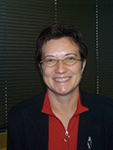
Linda Stalker obtained a BSc.(Hons) in applied geology (University of Strathclyde, Scotland) in 1990. Her PhD on the interaction of water with sedimentary organic matter in the laboratory, specifically examining the generation of oxygenated species (including CO2), was gained at the University of Newcastle-upon-Tyne. In 1994 she joined the University of Oklahoma (USA) on a Department of Energy sponsored post-doctoral study into organosulphur compounds trapped in coals. Since 1996 she has worked in petroleum E&P at Statoil, in Norway. She joined CSIRO Petroleum in 2000 as leader in gas geochemistry specialising in analysis and interpretation of carbon and hydrogen isotopes of oil and gases for the petroleum and CBM sectors. She is also heavily involved in the CO2CRC (The Cooperative Research Centre for Greenhouse Gas Technologies) and research in the geological storage of CO2 storage for the Energy Transformed Flagship. linda.stalker@csiro.au |
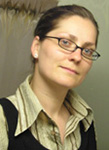
Ulrike Schacht holds a BSc in geoengineering sciences, a MSc in applied geochemistry (both from the Technical University of Berlin) and a PhD in marine geochemistry from the University of Kiel, Germany. She worked as a researcher for the Leibniz Institute of Marine Sciences in Kiel and at the Leibniz Universitaet Hannover, Germany investigating the early diagenesis of marine sediments. In January 2007 she joined the CO2CRC at the ASP (University of Adelaide). Here her research focusses on natural analogue studies for geosequestration, but especially on CO2 related sandstone diagenesis and geochemistry. uschacht@asp.adelaide.edu.au |
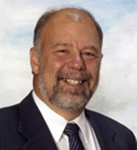
Ernie Perkins is a senior research scientist with the Carbon and Energy Management Department of the Alberta Research Council (ARC), Edmonton, Alberta, Canada. His area of expertise is geochemistry – the study of, modelling of and monitoring of chemical reactions in the subsurface involving rocks, formation waters and gases, and injected substances. During the last 20+ years, his principle areas of research have been the geochemical aspects of the subsurface storage of greenhouse gases and the monitoring/prediction of formation damage during enhanced oil recovery, particularly during steam based EOR. Ernie’s involvement in CO2 storage and sequestration began in the late 80’s/early 90’s with studies on CO2 disposal from the coal-fired power plants at Wabamun, Alberta. This was followed by generic research into geochemical greenhouse gas issues and on detailed studies into the Alberta Acid Gas (H2S and CO2) disposal programs. In 2000, he was the lead scientist on geochemistry in the Weyburn CO2 Research program. While on leave from ARC during the period of Sept/04 until Sept/06, Ernie was a senior research scientist with the Cooperative Research Centre for Greenhouse Gas Technologies (CO2CRC) in Canberra, Australia, and worked on the Otway Basin Pilot Program (OBPP). Ernie is now the principal geochemist in the PennWest CO2 M&V program, a research geochemist in the Weyburn II Greenhouse Gas program, Geochemical Program lead in the Redwater project, as well as being involved in numerous other CO2 related programs. ernie.perkins@arc.ab.ca |
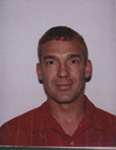
Dirk Kirste received his BSc (Hons, University of British Columbia) his MSc (University of Waterloo) and his PhD (University of Calgary). Since finishing his PhD he has been with Geoscience Australia and the Australian National University and now holds the position of Assistant Professor at Simon Fraser University in Vancouver. His specialisation is in aqueous geochemistry and geochemical modelling. He has been a part of Geodisc and the CO2CRC since 2002. |
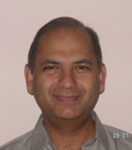
Sandeep Sharma holds Bachelors in electrical engineering (India), Post Graduate Diploma in business management (UK), Fellows Program (Sloan School, MIT). He is pursuing a Masters in sustainability management. Sandeep is managing the Otway Geosequestration Project for the Cooperative Research Centre for Greenhouse Gas Technologies (CO2CRC). Sandeep has been on secondment to the CO2CRC from Schlumberger, an oilfield services company, since January 2005. Working with Schlumberger since 1981, Sandeep has held a wide variety of positions in operations management, marketing and new product development around the globe. Most recently he was general manager for Schlumberger Wireline in Asia and project director for a full field re-development project based in Kuala Lumpur, Malaysia. Member: SPE and SPWLA. sharma2@slb.com |
References
Boreham, C.J., Underschultz, J., Stalker, L., Freifeld, B., Volk, H. and Perkins, E., 2007—Perdeuterated methane as a novel tracer in CO2 geosequestration. In: Farrimond, P., et al. (eds.), The 23rd International Meeting on Organic Geochemistry, Torquay, England, 9-14 September 2007, Book of Abstracts, 713-14.Freifeld, B.M., Trautz, R.C., Yousif, K.K., Phelps, T.J., Myer, L.R., Hovorka, S.D., and Collins, D. (2005). The U-Tube: A novel system for acquiring borehole fluid samples from a deep geologic CO2 sequestration experiment J. Geophys. Res. 110, B10203.
| The U-Tube: A novel system for acquiring borehole fluid samples from a deep geologic CO2 sequestration experimentCrossref | GoogleScholarGoogle Scholar |
Freifeld, B. M., and Trautz, R. C. (2006). Real-time quadrupole mass spectrometer analysis of gas in borehole fluid samples acquired using the U-tube sampling methodology. Geofluids 6, 217–224.
Hovorka, S.D., Benson, S.M., Doughty, C.K., Freifeld, B.M., Sakurai, S., Daley, T.M., Kharaka, Y.K., Holtz, M.H., Trautz, R.C., Nance, H.S., Myer, L.R., and Knauss, K.G. (2006). Measuring permanence of CO2 storage in saline formations—The Frio experiment Environmental Geosciences 13, 103–19.


